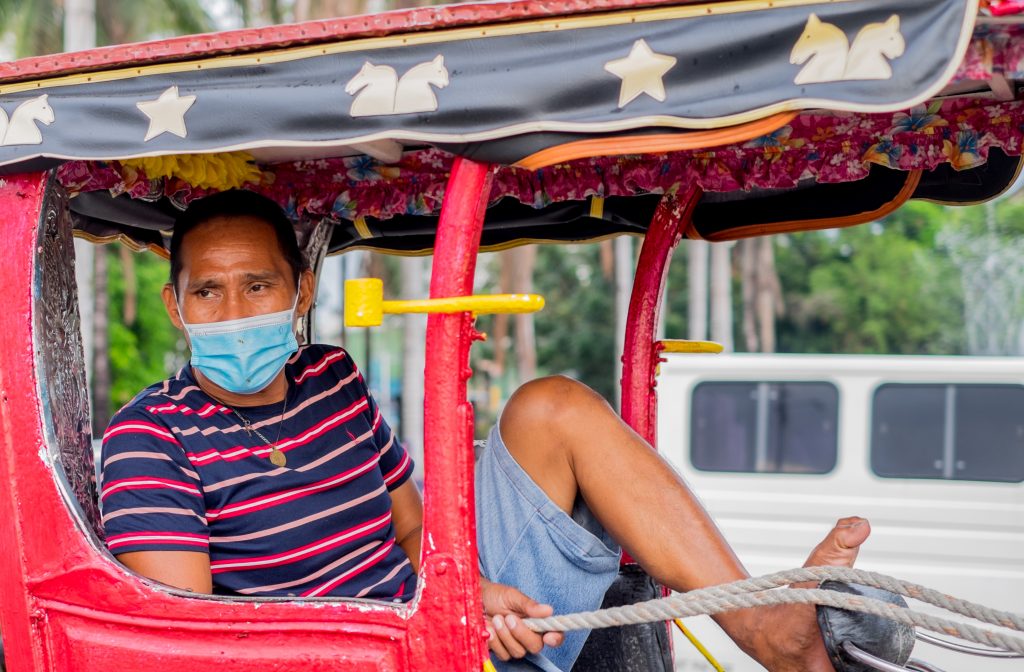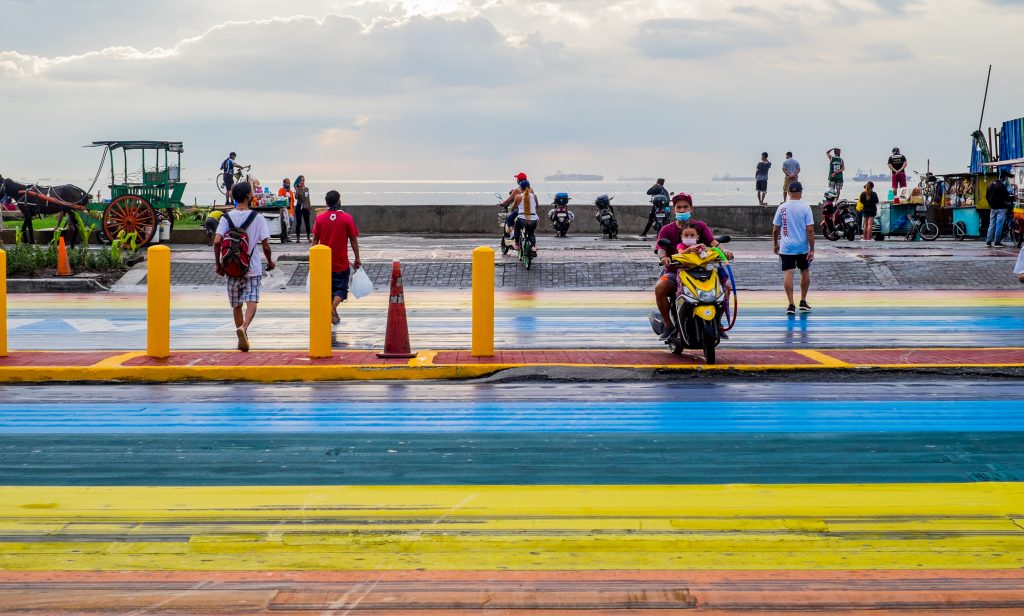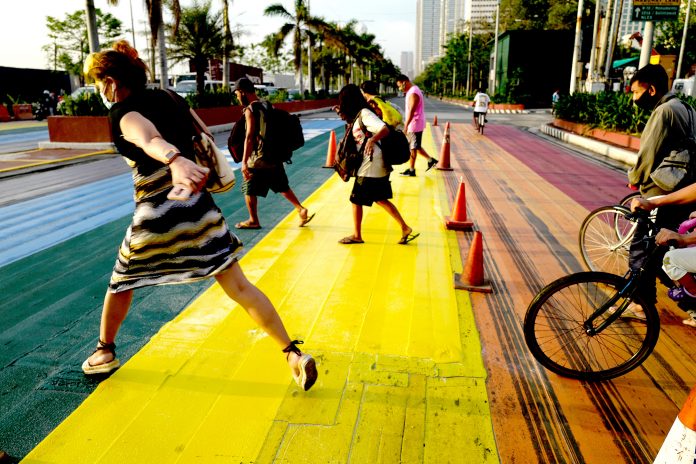Every afternoon, Angelo Arnejo and his horse, Andrew, would take a rest on a spot on Manila’s scenic Roxas Boulevard to wait for tourists who want to take a ride on a “kalesa.”
A “kalesa” is a horse-drawn calash used in the Philippines in years past. It was introduced to the islands in the 18th century by Spanish colonizers.
Today, it’s a tourist attraction in the busy streets of the country’s old walled capital. One of these streets has been painted the color of the rainbow this week.
Angelo, who has his own “kalesa” was surprised to see that his “parking space” on the boulevard by the famous Manila Bay has been painted with a dazzling rainbow.
The man, whose bread and butter was badly hit by the pandemic this year, said he just came back to driving Andrew around the city in the past few days and was surprised by the new paint.
He admitted that he could hardly afford to feed the horse now. Business is not that good as before because of the lack of tourists.
“I didn’t know it was for gays until you told me,” Angelo confided when informed about the significance of the “rainbow lane.”
On December 9, eve of International Human Rights Day, the city of Manila inaugurated the colorful lane to show support for the rights of members of the LGBTQ+ community.
“Now, whenever I sit here and look at that lane, I’ll remember my son,” said Angelo.
AJ, Angelo’s 27-year-old son, runs a small beauty salon in the outskirts of the city of Caloocan, north of Manila, to help the family survive, especially in the midst of the economic crisis.

Angelo said it was not easy at first to accept that his is grew up being gay. “But he’s my son, and he’s a good son,” said the man.
He said the “rainbow lane” should be “more than just a sign” that there are lesbians, gays, bisexuals, and transvestites in the community.
“I love my son and I know his gay friends. They are good people. They should be respected and treated like everyone else,” he said.
Angelo said everyone should look beyond the sexual preference of people to see their innate good ness and beauty.
The “rainbow lane” on Manila’s Roxas Boulevard is the second in the city. Another one is painted across the Manila City Hall.
On October 29, Mayor Francisco Domagoso signed an ordinance banning discrimination on the basis of sexual orientation and gender identity.
On November 10, the city also implement its own Gender and Development Code “to ensure all persons of any gender benefit equally and participate directly” in the activities in the city.

Mayor Domagoso said the “rainbow lanes” are the Manila’s way if recognizing the contribution of the LGBTQ+ community to the city.
“We wanted to recognize their actions, artistic minds, and talents,” he said, adding that in his office about 15 percent of the employees in his office are members of the LGBTQ+ community.
“The community is a big part of my and the city’s success, so we have to ensure that they are also protected and that we will try to make Manila a safe space for them,” the mayor told LiCAS.news.
Mhark Pancho, president of Bekshie ng Manila, an organization if village officials who belong to the LGBTQ+ community, said the rainbow lane “may be simple, but it has an impact” on them.
He said that after living in Manila for 40 years “this is the first time that my friends and I feel protected by the government.”
“The rainbow lane is a reminder that we are being welcomed and respected in the city,” he said.









